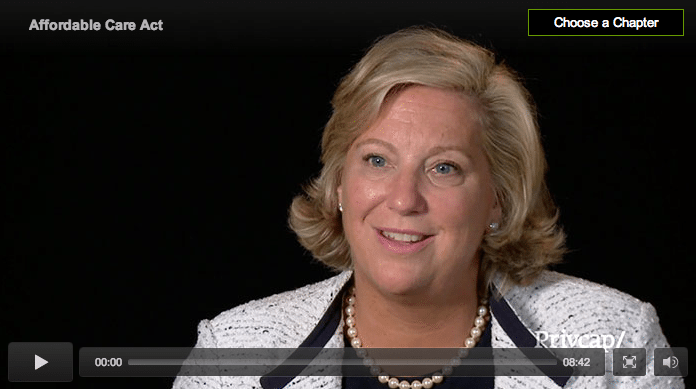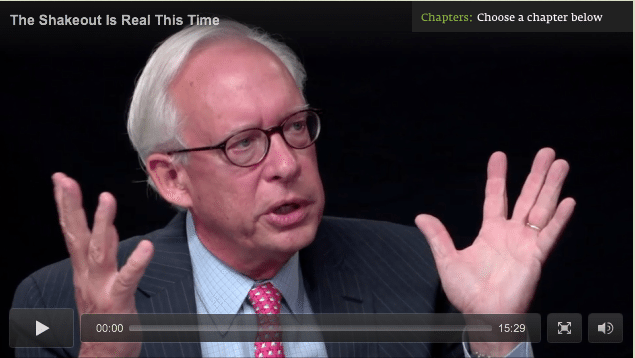The Incredible Shrinking GP
Using the saga of a fictitious private equity firm we’ll call Destiny Equity Partners, Privcap charts the franchise impact of a smaller follow-on fund with smaller fees. It is a story that will ring true for many GPs who now must operate in leaner, meaner conditions. By David Snow and Matt Malone
What happens to your firm’s finances when your next fund is a smaller fund and the fees aren’t as GP friendly? Let’s find out. It’s a math exercise worth undertaking because, many, many firms across the private equity market are facing exactly this reality.
Let’s pretend there is a firm called Destiny Equity Partners. If we compare the fee revenues generated by Destiny at its peak in 2006 versus its diminished fund and fee position in 2013, we see a firm that is forced to promulgate its business with a roughly 37 percent reduction in fee income—and steadily declining.
Like many successful buyout firms, Destiny’s life began in the 1990s with the close of its debut fund at an impressive $400 million in committed capital.
Notwithstanding the “two and twenty” shorthand for alternative-investment fund economics, Destiny’s limited partners agreed to a 1.85 percent management fee, designed to support the operations of the new firm. And in truth, the $7.4 million in annual revenue that is not spent on firm resources and salaries tends to go in the partners’ pockets—it’s not a bad way of life.
Further generating wealth creation for Destiny’s founding partners are transaction fees—each new deal done provides the opportunity for Destiny to charge its portfolio companies investment-bank-style fees on top of the management fees already charged to the LPs. The GPs share 50 percent of these “deal fees” with the LPs.
Fast-forward to 2006, and things have never been better for Destiny Equity Partners (see 2006 “Snapshot” table). The private equity industry has grown tremendously with unprecedented inflows of institutional capital, allowing Destiny, with its solid investment track record, to raise a $5 billion fund the prior year. This is its third follow-on fund to have been much bigger than the previous effort.
Given the fervor that LPs have to commit capital to the asset class, Destiny has been able to maintain its economic fee terms—the management fee holds steady at 1.85 percent of committed capital, and deal fees are shared on a 50/50 basis. After a period of five years, the management fee drops to 1.5 percent and is now calculated based on the amount of equity invested in deals that have yet been exited.
By 2006, the firm has grown its roster of employees to 70 and has added many new partners as capital under management has grown.
Excluding carried interest payments (which go directly to the personal accounts of those in the “carry pool” and not toward the operations of the firm), the firm in 2006 generates $133.25 million from management and deal fees across four active funds, or nearly $2 million per employee. Times are good, and the founding partners wonder aloud howmuch they should plan on raising for the next fund—$7 billion? $9 billion?
Then Came 2013
The world did not continue on an upward trajectory for Destiny Equity Partners. It turns out that 2006 was a year marked by irrational exuberance in all markets affect-ing private equity—fundraising, debt, M&A.
After hitting the fundraising trail in 2010 with higher hopes, Destiny ends up closing on $3 billion in commitments for Fund V in 2012. The partners feel fortunate to have secured capital, but they recognize that their business is going to look and operate differently. Not only is the firm’s base of capital smaller with the new fund, but the terms and conditions agreed to by the limited partners reflect a changed environment in which the investors have greater negotiating power. The management fee on committed capital has dropped to 1.5 percent, and deal fees go entirely to the LPs.
At the very least, Destiny is drawing fees on remaining invested capital from Fund IV, now in its ninth year. The good news is that the intermittent years have been horrible for exits, and there is still much invested capital to charge a fee against. The bad news is that with each new year this number will decline and with it the overall fee base for the firm—they’d better raise a bigger next fund or things will start to get ugly!
Destiny has been able to agree to a fund-life extension with its limited partners for the long- in-the-tooth Fund III, now in its 13th year. But the extension only gives Destiny a 0.2 percent management fee on the remaining invested capital in the fund. The message from LPs is, “Hurry up and liquidate that portfolio.”
Impact Analysis
Having gone from fee revenue of $133.25 million in 2006, Destiny in 2013 expects revenue of $84.1 million, representing a 37 percent decline. What impact will this decline have on the franchise?
First and most importantly, there isn’t as much, or any, management fee and deal fee income “left over” for the partners to pocket. The fee stream more closely matches the essential expenses of the firm, and in fact the firm has had to recalibrate its expenditures to reflect the new revenue.
In 2006, Destiny had 70 employees with $1.9 million in revenue per employee. If all 70 employ- ees stayed on board through 2013, that revenue- per-employee figure would drop to $1.2 million. The firm decides to close one of its three offices and let a number of partners and supporting professionals go.
The reduction in investment talent is not simply a function of the greed of top partners—since 2006 it has become much more expensive to be a private capital firm. Destiny has had to become a Registered Investment Advisor with the SEC, and it spends some $1 million per year on compliance expenses.
In addition, its limited partners demand a much higher level of service, requiring Destiny to bulk up its investor-relations staff, back office, and other support services.
The new environment has now actually made it more difficult for Destiny to retain the talent for which it has already budgeted because of the characteristics of the carried-interest “distribution waterfall.” The firm’s first through third funds have “American-style” waterfalls that tend to pay out carry earlier in the fund’s life. This has been a nice feature, especially for junior investment professionals who are allocated points of carry and get to enjoy the fruits of the firm’s success while still relatively young.
For Fund IV, Destiny has been compelled to adopt a “European-style” waterfall, which does not begin to pay carry to the GP team until all committed capital has been returned to the LPs. This means that everyone allocated carry in that fund will likely have to wait years—perhaps as long as eight to ten years—before beginning to see the big bucks (if there are indeed any to be had). It leaves the nonfounding professionals more vulnerable to being poached by bigger, wealthier firms that can promise a faster track to wealth creation.
It is surely nothing to sneeze at that Destiny Equity has a brand-new $3 billion fund to put to work in a recovering economy, which is a better situation than many fund-challenged market participants. But the business is a different business, forcing the top partners to be as rigorous in mapping out their own operations as they require of their portfolio companies. The founding partners can be forgiven for occasionally lapsing into nostalgia for the middle of the prior decade.
And don’t even mention taxes…
What happens to a firm’s income when its follow-on fund, and its fees, get smaller? A fictional case study






